Recommendations for growing and caring for eggplant seedlings
Many summer residents are wondering: how to grow eggplant seedlings at home? Our article will help you find out.
The country of origin of the eggplant is India. The cultivation of this oriental vegetable not so long ago was almost impossible in our moderately cool climate with unstable weather conditions. Today this is no longer a problem: if the care of eggplant seedlings is properly organized, you can wait for a good harvest.
What does a gardener need to know about eggplant?
- Eggplant is a nightshade crop, very demanding and capricious. Seedling care needs careful and constant. The conditions for growth must be ideal. In its characteristics and properties, eggplant is similar to a vegetable such as pepper.
- Growing eggplant requires a lot of light. With insufficient light, it will develop slowly and poorly, the fruits will grow small, and the yield will generally decrease. But too much light is not an option either. Long daylight hours are not for this vegetable. It blooms when the length of daylight hours is no more than 14 hours. If the lighting time is artificially reduced (to 12 hours a day), the flowers and fruits will ripen faster. For this purpose, you can cover the seedlings with a special light-proof material, opening them from seven in the morning to six in the evening.
- Heat is something without which you cannot get a good eggplant harvest. The optimal temperature regime is 20-25 degrees. If the thermometer falls to a mark above or below the specified limits, then the flowers will fall off. Frosts are not allowed at all! The cultivation of this culture is possible only in protected ground.
- The composition of the soil should be fertile, with a properly selected set of trace elements: saturated potassium, phosphorus, nitrogen. This is most relevant at the initial stage: from the moment the first shoots appear until the stem begins to harden.
- Eggplant also needs moisture, as it comes from a humid southern climate. If the soil is not sufficiently moistened, the plants will grow slowly and produce poor, shallow crops.
- Eggplant roots are quite powerful, but are located at the very surface of the soil. In this regard, loosening must be done correctly, try not to touch the root processes.
- The period of growth and maturation of this vegetable crop lasts a long time (it can be up to 150 days). Therefore, seedlings are grown first.
- Protected ground is a prerequisite for successful growth and ripening of fruits. Excellent plant care can be provided in greenhouses, greenhouses or directly in the ground under the film.
- Peppers and cucumbers can be neighbors of a capricious vegetable; it gets along poorly with tomatoes.
Soil preparation for planting seedlings
The soil is prepared in the fall and stored in a cool place. You can buy a ready-made version in a special store. Necessary qualities of the earth: low acidity, looseness, air and moisture permeability, saturation with nutrients, disinfection.
How to properly prepare the soil with your own hands? Mix one part black peat with two parts manure or compost humus, add half of the caked shavings. For dense clay soil, it is better to add coarse river sand, previously washed.
You can take land for seedlings from the garden, from the area where the cucumber or cabbage was grown.
The soil must be disinfected... It is advisable to steam over boiling water for half an hour.Another way is to scald the ground with a hot solution of potassium permanganate (the color should be saturated).
Soil fertilizing: superphosphate, wood ash, urea, potassium.
How to prepare seeds?
The optimal sowing time: for the future placement of seedlings in the ground under a film, it is necessary to plant seeds in the second half of March; growing in a greenhouse involves sowing seeds in early March or late February.
The point of seed preparation is disinfection. They are immersed in a dark purple solution of potassium permanganate, treated for about 30 minutes, then washed.
To make the seeds germinate faster, they are treated in a boric acid solution. Take half a gram of the substance and a liter of water. Also used for these purposes are liquid humates or growth regulators. A solution of aloe leaf extract is suitable in the proportion: one part of the herbal remedy to ten parts of water.
It is best to germinate the seeds before planting. Place the eggplant seeds wrapped in a wet cloth under a plastic wrap or bag to keep them moist and warm. The temperature under the film should be high, not less than 25 degrees. Indoor batteries are a poor place for germination, where the seeds will dry out quickly.
How to sow?
Seeds must be planted in separate containers (plastic cups or pots are suitable), two or three seeds every 2 cm. Then one of the strongest sprout will be selected, others will have to be cut off. Before planting seeds, the soil must be watered with settled water from the tap (a pale solution of potassium permanganate is suitable). The sprouted seeds are immersed in the ground by 2 cm. From above it is necessary to sprinkle them with earth, which should be sifted first. No need to water. Cover containers with seedlings with polyethylene film, create a warm temperature regime.
If everything is done correctly, the first shoots will hatch by the fifth day. If the seeds are planted dry, then on the tenth day. Now the seedlings can be freed from the film and placed in a place where there is a lot of light and cooler (five degrees less than when planting). Such conditions will help to strengthen the eggplant root system. But it should not be too cold, then the plants may disappear.
How to avoid common mistakes?
- Seeds should not be stored for too long or in unfavorable conditions.
- Growing future seedlings does not tolerate cold and abundant watering.
- Do not put germinating seedlings on a battery, as this can dry out the soil.
- Failure to comply with the required temperature led to the fact that the sprouts were going to germinate a little later (almost by the 25th day), and you decided to get rid of the soil without waiting for the first shoots? Please be patient, sometimes it is worth waiting a little longer, do not rush to throw away the land with seeds that did not sprout on time.
- Do not make drafts, the seedlings do not like them. When airing the room, remove the sprouted plants temporarily to another place.
How to care for seedlings?
- Lighting. In the first time after sowing, care for the seedlings should be especially careful. It is necessary to provide an additional light source, since at the end of winter the length of daylight hours is still insufficient. Fluorescent lamps can be used for this purpose. They must be placed 30 cm from the glasses with seedlings. Turn on, if necessary, in the morning and evening, the meaning of this procedure is to extend the daylight hours to 14 hours.
- Watering. Seedling care necessarily includes watering the plants. This should be done only on the third day after the appearance of the first shoots. Before that, you can only lightly spray the dry soil. Later, the watering procedure must be repeated constantly with an interval of five days. Water with settled water from the water supply, heated to 30 degrees, in the morning. Do not overdry the soil and moisten it too much, try to adhere to the "golden mean". You can water a little more often during hot weather. Be sure to loosen the soil after watering without touching the roots.
- Transfer. Experienced gardeners recommend first planting seeds in shallow dishes, and after 4 weeks replanting sprouted seedlings in a large container. This must be done with extreme caution. A pick is undesirable due to the weakness of the root system.
- Nutrition. The introduction of nutrients into the soil is also the care of the seedlings. It is necessary to feed the first time two weeks after the transplant. For this, both liquid and dry mineral fertilizers are used. You can fertilize with bird droppings by diluting the dry product with water, making a solution of low concentration. Phosphorus, potassium, nitrogen must be included in the applied top dressing. The next application of minerals must be done after another two weeks.
- Hardening. Such care is also important for seedlings. Especially when you intend to plant eggplants directly in the soil under the film. Before planting is carried out, the seedlings are taken to a cool place (balcony, loggia, veranda, window sill with an open window) in about ten days. You can do what experienced summer residents do: before planting, the seedlings are transported to the country house and left in the greenhouse; at night it is necessary to insulate by covering with a film.
Transferring seedlings to the greenhouse
First, prepare the soil. The first work needs to be done in the fall.
- Remove plant residues from previous plantings.
- Water the soil abundantly.
- Disinfect with a special solution (dilute 2 large spoons of copper sulfate with 10 liters of hot water).
- Dig up and loosen up.
Spring soil care includes the following steps.
- Digging dense soil and loosening soft soil.
- Top dressing. Growing eggplants is impossible without fertilizing the soil: humus from compost or manure, dolomite flour (reduces the acidity of the earth, contains calcium, magnesium), low-lying peat layer. To make the soil looser, you can add caked shavings, ash, potassium sulfate... Commercially available compound fertilizers work well too.
- Heating the soil. To do this, cover the ground with a film. Planting seedlings requires warmth from the soil and air (15-18 degrees).
Planting seedlings
The pits for planting eggplant seedlings should be 12 cm deep. The gap between them is about 50 cm. Add a little ash to each hole, moisten with a light solution of potassium permanganate.
When planting sprouts, take care of their roots. It is necessary to water the seedlings in advance, about two hours before planting is planned. After placing the seedlings in the ground, they must be watered again.
In hot weather, shade the seedlings for a couple of days. Cover the foil with a light cloth.
In a greenhouse, planted eggplants need constant watering. The water should be warm enough. First, moisten the soil five days after planting the plants. Then watered every seven days. When the fruits ripen or the weather is particularly hot, the soil should be moistened twice a week. After a while (when ten hours have passed) the soil should be loosened.
The greenhouse must be opened often so that the fungus does not start and the sprouts do not overheat, especially in the heat. Do not create drafts when ventilating.
Caring for seedlings in a greenhouse implies timely feeding. Growing eggplants requires feeding the seedlings up to five times during the ripening of the fruit. The first fertilizers are applied in the third week of planting seedlings. Do not overdo it with organic additives, as this can harm the ripening of the fruit. Mineral fertilizers can be taken such as "Solution", organic - "Biud". It will be correct if you begin to introduce them in turn.
In addition to root dressing, you can apply spraying to the leaves, repeating the procedure after two weeks.
Boric acid (solution: 5 l of water plus 1 g of acid) will help if the plants do not bloom well.
The growth and development of eggplants must be monitored, and then you yourself will see what and at what point they may need: magnesium, potassium, nitrogen.
Magnesium is needed with a weak root system, potassium - with excessive development of greenery, nitrogen - if shoots grow poorly.
To pollinate eggplants, insects are not needed, they self-pollinate. To help them with this, you can shake the twigs a little in the morning.
Advice
To prevent the seedlings from growing weak and lethargic, provide them with proper care:
- do not forget to loosen after watering;
- do not use cold water for irrigation;
- do not water in the evening;
- do not make drafts next to the seedlings;
- Cover the soil with cut grass if the weather is very hot to avoid overheating the roots.
- Do not plant seedlings in the same spot in the greenhouse for several years in a row.
Fruit
They are different in shape and color, it all depends on the varieties. Usually they are blue or purple, sometimes with a green tint, reddish, brown, white, pinkish orange and even striped. The eggplant fruit looks like an egg, pear, ball, sometimes like a cylinder and even a saber.
Fruit picking can begin somewhere in July, at the very end, a month after the first ovaries. It is better to cut them off at the beginning of ripening, they will be tastier and more tender.
Eggplants that have not yet matured can be stored in a cool place, where they gradually ripen.
Do not be afraid to take up the cultivation of these beautiful, healthy and tasty vegetables - if you have a strong desire, patience, hard work and a mood for success, then everything will work out.
Learn, gain experience, communicate with professional gardeners, study the literature on how to care for eggplant. Perhaps soon beginners will begin to listen to your advice.
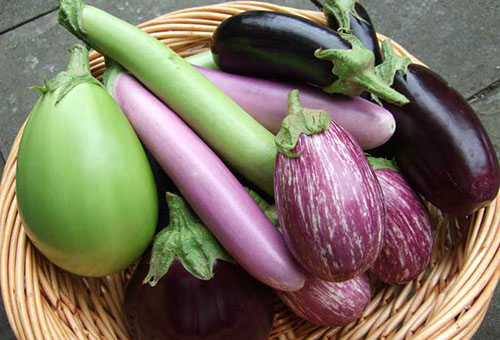
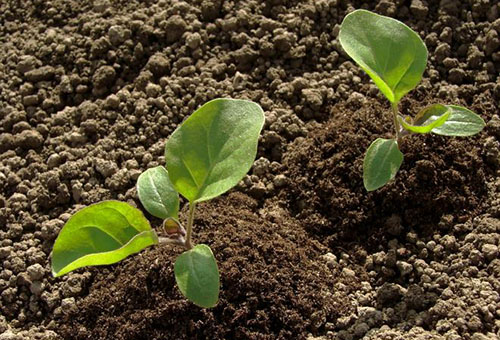
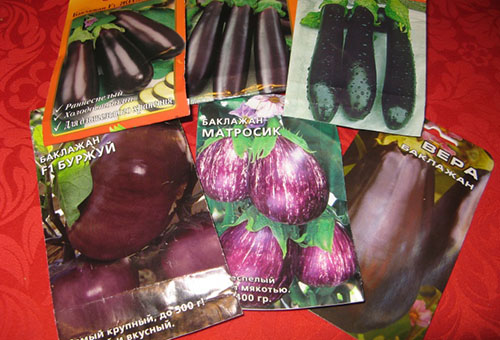
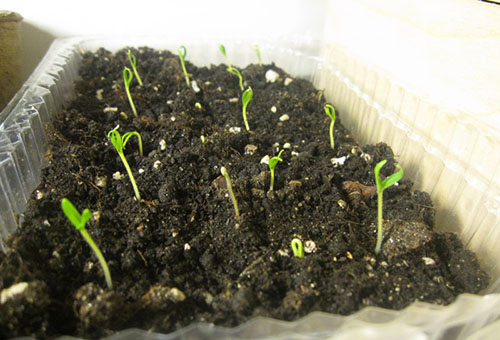
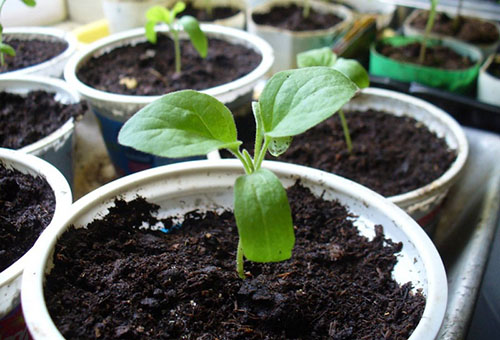
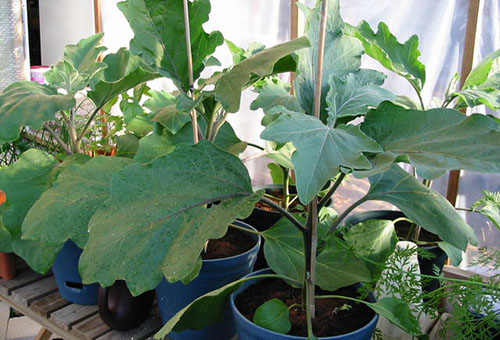
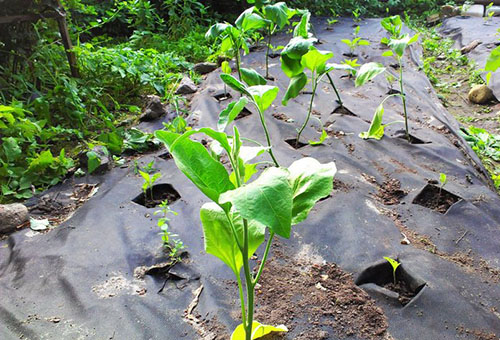
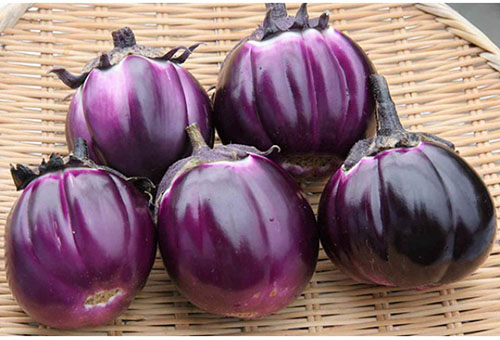
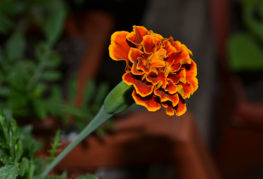
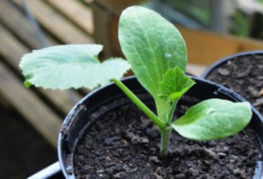
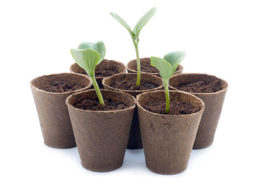
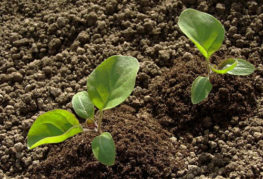
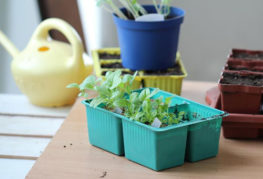

and will be published shortly.